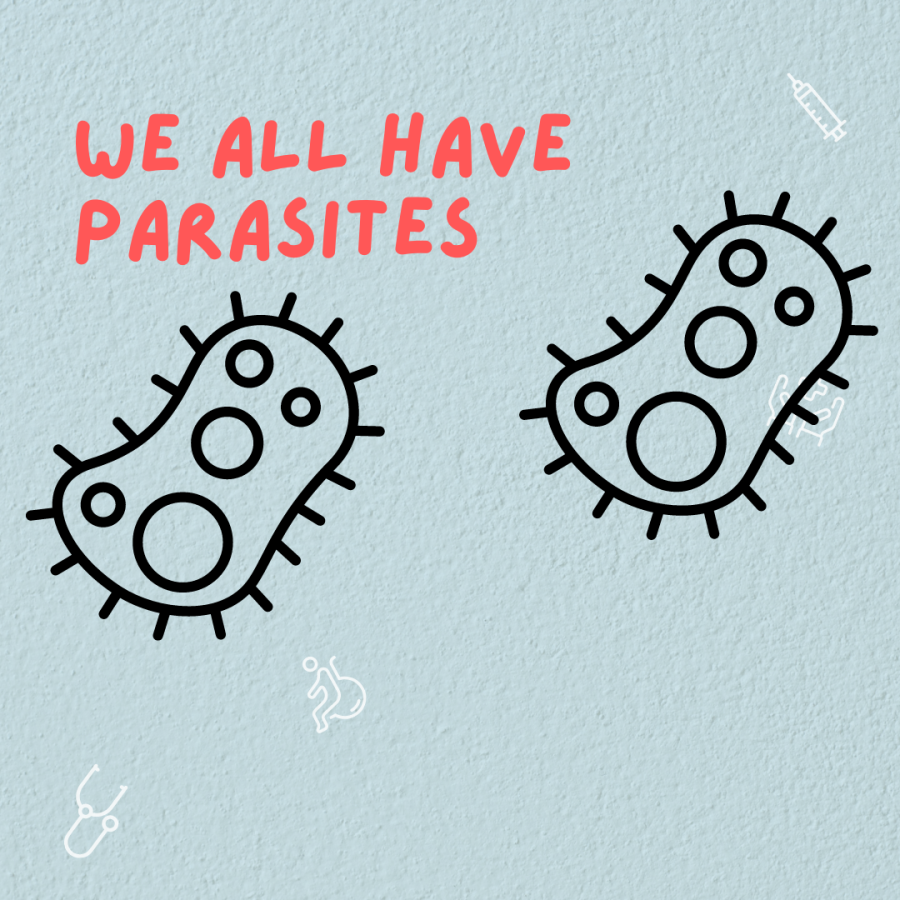We All Have Parasites
December 2, 2022
When I was a kid, I would watch Monster Inside Me, and I’ve been traumatized ever since. The thought of people having parasites is terrifying. They would show these huge worms coming out of people’s skin, eyes, ears etc. That could never be me, right?
About 80% of adults and children have parasites in their gut. Don’t freak out though. Parasites are way more common than you probably think, and they typically don’t crawl out of your ears.
You’ve probably thought the only major way you could get parasites would be from uncooked meat, which is true, but there are so many more ways people can acquire them. In fact, the most common way to get parasites is through contaminated food and water, tap water included. Cryptosporidium is a common parasite that you typically get from infected animal or human stool in lakes and rivers. Public water systems who get their water from lakes, ponds, rivers, ect., usually have cryptosporidium oocysts, the egg form of this parasite, in the water. The symptoms of this parasite are stomach cramps, fever, weight loss and nausea (basic parasite symptoms). Luckily, most people with a good immune system will fight this off untreated.
Another super common way to get parasites is through consuming raw, unwashed fruits and vegetables. Foods can get contaminated by poor harvesting, planting, storage, and transportation. The influx of processes that fruits and vegetables go through allow for so many different types of parasites for people to get. Some will go away, and you’ll never know you had them, and others will turn up eventually. One of these parasites in fruits and vegetables includes Ascaris Lumbricoides. About 1.2 billion people are infected with this. Ascaris Lumbricoides is also known as hookworm or whipworm. This is a soil transmitted helminth (STH). They account for most of the parasitic diseases world-wide. This parasite can be coughed up or passed through stool. An infestation can cause blockage in the intestines as well as things like appendicitis and hemorrhage.
Now when it comes to meat, it’s a little bit easier to be parasite cautious. If the meat is raw or not cooked properly, there is most likely some kind of parasite in it. Most cooked meat or fish won’t have any parasites unless the parasite came into contact with the meat after it was cooked. About 84% of beef cattle test positive for parasites. The most common parasite found in raw meat are tapeworms. Some symptoms of this parasite can be salt cravings, abdominal pain, weakness, loss of appetite, weight loss and much more. If you ingest certain tapeworm eggs, they can migrate out of your intestines and form larval cysts in body tissue or organs, but usually people only have one or two. These worms basically take all the nutrients from the food the host ingest. This means the host doesn’t get the nutrients and will usually experience weight loss. The scariest part about tapeworms is how large they can grow and how long you can have them. The average tapeworm ranges from anywhere between 4-28 inches long, and can last up to 30 years. But if that doesn’t scare you, some people have reported being able to feel them move. Luckily, you can treat tapeworms with antibiotics.
There is no way to fully prevent all kinds of parasites, so embrace it. You can even name them if you’d like. Most parasites can be treated with antiparasitics, and others will naturally die off if you have a good immune system. But it’s always good to be cautious about what you’re eating.




































